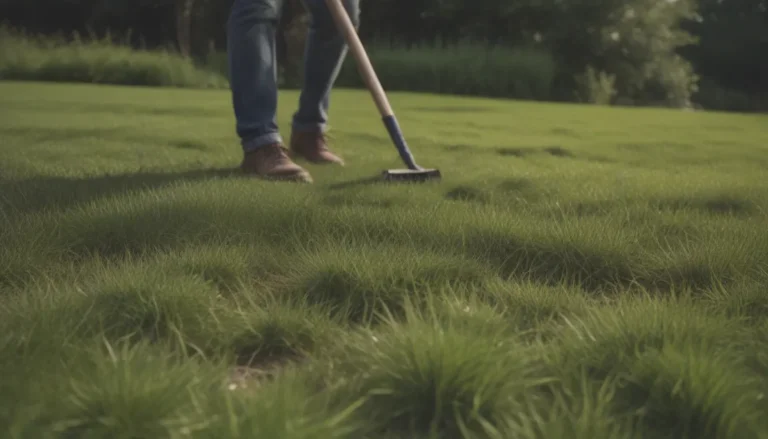Kalanchoe Fedtschenkoi Care: Everything You Need to Know

Welcome to our comprehensive guide on caring for Kalanchoe fedtschenkoi, also known as lavender scallops. This beautiful succulent is a popular choice for both indoor and outdoor plantings, thanks to its unique scallop-edged leaves and colorful blooms. In this article, we’ll provide expert advice on how to best care for this stunning plant to ensure its success in your garden or home.
Introduction to Kalanchoe Fedtschenkoi
Originating from Madagascar, Kalanchoe fedtschenkoi is a hardy plant that is easy to propagate using stem or leaf cuttings. With the right care, this plant can thrive and bring a touch of beauty to any space. Let’s delve into the essential elements of caring for Kalanchoe fedtschenkoi.
Light Requirements
- Kalanchoe fedtschenkoi thrives in bright, indirect light indoors and filtered or morning light outdoors.
- Place outdoor plantings in a location with afternoon shade to protect them from harsh direct sunlight, which can burn the leaves.
Soil Needs
- Use a well-draining potting mix such as cactus or succulent soil for Kalanchoe fedtschenkoi.
- Ensure the mix contains 50 to 70 percent perlite, pumice, or coarse sand to allow for proper drainage.
Watering Tips
- Kalanchoe fedtschenkoi stores water in its fleshy leaves, making it susceptible to rotting when overwatered.
- Water deeply after the soil has completely dried out, and allow it to dry again before watering. Look for slightly wrinkled or shriveled leaves as an indicator that the plant needs watering.
Temperature and Humidity
- Maintain temperatures between 60 and 85 degrees Fahrenheit for optimal growth.
- Protect the plant from temperatures below 30 degrees by bringing container plantings indoors during the winter or treating them as annuals.
- Kalanchoe fedtschenkoi prefers low to moderate humidity levels, thriving in typical indoor humidity of around 40 to 50 percent.
Fertilizing
- Feed Kalanchoe fedtschenkoi every two weeks with diluted liquid houseplant fertilizer during the growing season.
- Begin fertilizing when new growth appears in late winter or early spring, continuing through the end of summer for best results.
Types of Kalanchoe Fedtschenkoi
- ‘Aurora Borealis’: This variety of Kalanchoe fedtschenkoi features unique coloring and vibrant blooms.
- ‘Variegata’: Known for its variegated leaves, ‘Variegata’ is a striking addition to any garden.
- ‘Majestic Scallops’: The ‘Majestic Scallops’ variety showcases beautiful scalloped leaves and colorful flowers.
Pruning Techniques
- Prune Kalanchoe fedtschenkoi after blooming to stimulate new growth.
- Avoid cutting back more than one-third of the foliage at a time and use sharp, sterilized pruners to prevent disease transmission.
- Remove dead limbs and damaged leaves as needed throughout the year.
Propagation Methods
- Kalanchoe fedtschenkoi is easy to propagate using stem cuttings in soil or leaf cuttings placed on top of the soil.
- Gather sterilized scissors or pruners, small plant pots, succulent soil mix, and water for successful propagation.
Propagating Kalanchoe Fedtschenkoi Using Stem Cuttings
Propagating Kalanchoe Fedtschenkoi Using Leaf Cuttings
Potting and Repotting Guidelines
- Repot Kalanchoe fedtschenkoi every two years, increasing the pot size as needed.
- Handle the plant delicately to prevent breakage and use terra cotta pots for optimal moisture control.
- Ensure pots have drainage holes and empty saucers or drip trays after watering.
Common Pests and Diseases
- Watch out for common pests like spider mites, scale, and mealybugs that may infest Kalanchoe fedtschenkoi.
- Prevent fungal infections such as root rot and powdery mildew by avoiding overwatering and maintaining proper plant hygiene.
Encouraging Flowering
- Kalanchoe fedtschenkoi produces vibrant flowers that may take several years to bloom.
- The plant requires 12 to 14 hours of darkness per night for several weeks to initiate flower growth.
- Stimulate blooming naturally outdoors or replicate these conditions indoors for a stunning floral display.
Bloom Months
Kalanchoe fedtschenkoi typically blooms in spring or early summer.
Description of Flowers
The bell-shaped flowers of Kalanchoe fedtschenkoi feature a reddish-brown outer layer and red petals inside, attracting pollinators like hummingbirds and butterflies.
Troubleshooting Common Issues
- White Spots on Leaves: Remove affected areas and maintain dry foliage to prevent powdery mildew.
- Wrinkled Leaves: Water deeply when leaves appear wrinkled, monitoring soil moisture regularly.
- Stem Turning Brown: Brown stems may indicate overwatering and rot, requiring stem cutting propagation to save the plant.
In conclusion, Kalanchoe fedtschenkoi is a delightful plant that can thrive with proper care and attention. By following our expert advice on light, soil, water, temperature, fertilizing, pruning, propagation, potting, pests, diseases, and flowering, you can ensure the success of your Kalanchoe fedtschenkoi in any setting. Happy gardening!
Sources:
– ASPCA: Kalanchoe species poisoning in pets.





